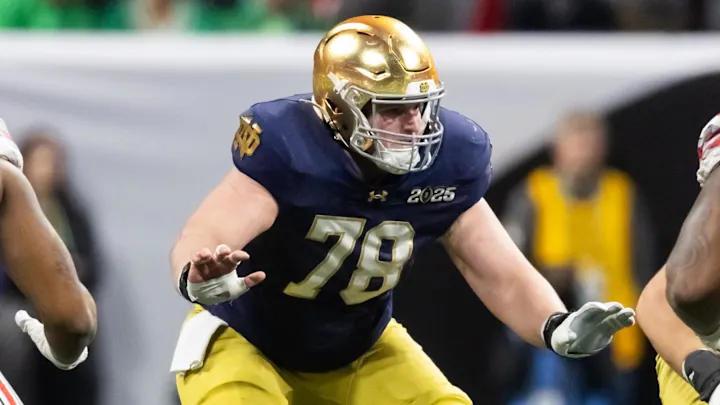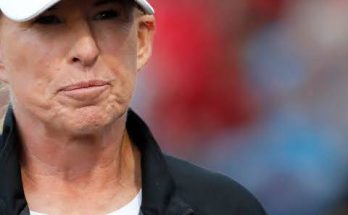Indiana University’s football program has seen a significant shift in recent years, marked by a level of momentum that has helped propel the team to new heights. This momentum has not only led to improved performance on the field but has also played a pivotal role in attracting high-impact transfers, players who can provide immediate contributions and help build the program’s future. A combination of consistent success, strategic coaching, and an evolving culture has made Indiana an increasingly attractive destination for players looking to make their mark at the collegiate level.
The Rise of Indiana Football: A Journey of Transformation
Indiana University, located in Bloomington, Indiana, is perhaps best known for its basketball pedigree, but in recent years, the football program has begun to carve out its own identity. Under head coach Tom Allen, the Hoosiers have made significant strides in the Big Ten, with a notable improvement in both recruiting and overall performance. The turning point came in 2019 when Allen led the team to a 8-4 regular-season record and a berth in the Gator Bowl. This marked the program’s first bowl game in four years, signaling a change in fortune for Indiana football.
The 2020 season was particularly special for Indiana fans. Despite the challenges of playing during the COVID-19 pandemic, the Hoosiers posted a remarkable 6-1 record in a shortened Big Ten season, finishing as the second-best team in the conference’s East Division. The team’s success, highlighted by thrilling victories over Penn State, Michigan, and Wisconsin, demonstrated the program’s potential to compete at a high level.
This unprecedented success sparked a sense of momentum that has carried over into the following seasons, creating a platform for the Hoosiers to continue to grow. With a 2021 season that featured several competitive outings and a continued focus on player development, the program solidified its place as one of the more respected teams in the Big Ten.
What Is ‘Remarkable Momentum’ in College Football?
Momentum in college football refers to the combination of factors—on-field success, culture, and leadership—that can propel a program forward, creating an environment in which recruiting, player development, and team success build upon each other. For Indiana football, this remarkable momentum was not just about winning games; it was about proving that the program could compete with the best in the Big Ten and that it was on an upward trajectory.
Tom Allen’s leadership and the team’s consistent performance in recent years have helped elevate the program’s status. Recruiting rankings improved, and Indiana began to attract a higher caliber of player, both from high school and, increasingly, the transfer portal. The Hoosiers’ success became more than just a series of wins—it became a narrative that resonated with athletes looking for a place where they could thrive, develop, and contribute to a team on the rise.
The Role of Momentum in Attracting Impact Transfers
The transfer portal has revolutionized college football recruiting, providing athletes with an opportunity to find a new home when their original program no longer meets their needs or aspirations. For many programs, the ability to attract impact transfers has become an essential component of sustained success. The transfer portal allows teams to fill gaps in their roster quickly and efficiently, bringing in experienced players who can make an immediate impact.
For Indiana, the remarkable momentum created by the program’s recent success has been a driving force in attracting top-tier transfers. Players looking for an opportunity to start, compete for championships, or develop under an established coaching staff have taken notice of the Hoosiers’ upward trajectory. Several key transfers have played pivotal roles in bolstering Indiana’s roster in recent years.
High-Profile Transfers: Impact on Indiana’s Roster
Indiana football’s momentum has led to a series of impactful transfers, players who have helped the Hoosiers remain competitive in the Big Ten. These players, many of whom were former standouts at their previous schools, saw the Hoosiers as a program with the potential to maximize their skills and achieve team success.
One of the most notable transfers in recent history was quarterback Jack Tuttle, who joined Indiana after spending time at the University of Utah. Tuttle was a highly regarded recruit coming out of high school and had been the backup quarterback at Utah. When the opportunity to play for Indiana presented itself, Tuttle jumped at the chance, looking for a program where he could showcase his talent and earn playing time. Tuttle’s decision to transfer to Indiana was a major coup for the Hoosiers, providing them with depth and competition at the quarterback position.
Another key transfer was running back Stephen Carr, who came to Indiana from the University of Southern California (USC). Carr was a standout at USC, and his decision to transfer to Indiana was driven by the opportunity to play under Coach Allen’s system, which emphasized a physical, run-first approach. Carr’s presence in the backfield provided an immediate boost to the Hoosiers’ offense, adding both talent and experience.
In addition to skill players, Indiana has also benefited from transfers on the defensive side of the ball. Defensive lineman Demarcus Elliott, who came from Georgia, was another key addition to the team’s roster. Elliott’s experience in the SEC added a valuable dimension to Indiana’s defense, and his leadership on the field helped solidify the team’s defensive front.
These are just a few examples of how Indiana has leveraged its momentum to attract impact transfers. Each of these players brought with them not only talent but also leadership, experience, and a desire to contribute to a program that was poised for continued success.
Coaching and Culture: The Driving Forces Behind Momentum
While player acquisition and success on the field are critical components of a football program’s growth, coaching and culture are the underlying factors that sustain momentum over time. Tom Allen’s leadership and coaching philosophy have been central to Indiana’s rise.
Allen is known for his infectious energy, attention to detail, and emphasis on developing a team-oriented culture. His commitment to building relationships with players, both on and off the field, has created an environment where players are encouraged to grow as individuals while also contributing to the collective success of the team. This culture has resonated with players, making Indiana a desirable destination for transfers looking for more than just a place to play football.
Additionally, Allen’s ability to develop players has been a key selling point for Indiana. Many of the impact transfers who have come to Bloomington have cited the program’s focus on player development as a major factor in their decision-making process. Under Allen’s guidance, players have had the opportunity to improve their skills, increase their chances of success at the next level, and become better overall athletes.
This culture of development and growth has created a snowball effect. As more players have success at Indiana, the program’s reputation has continued to grow. More high school recruits and transfer portal athletes are beginning to see Indiana as a place where they can achieve their goals, both personally and professionally.
Building for the Future: The Long-Term Impact of Momentum
While Indiana’s recent success and momentum have been impressive, the true measure of the program’s growth will come in the years to come. The Hoosiers are no longer just a team fighting for bowl eligibility; they are a program with legitimate aspirations of competing for Big Ten championships and potentially making a run at the College Football Playoff.
The key to sustaining this momentum will be the continued development of talent, both through recruiting and the transfer portal. Indiana’s success in attracting high-impact transfers has given the program the depth and experience it needs to compete with some of the top programs in the nation. Moving forward, the Hoosiers will need to continue building on their momentum by securing top-tier talent and maintaining the culture that has made them a rising force in college football.



